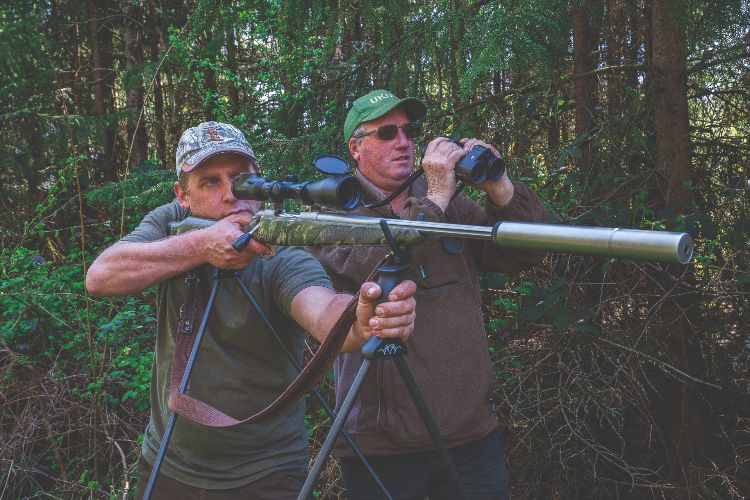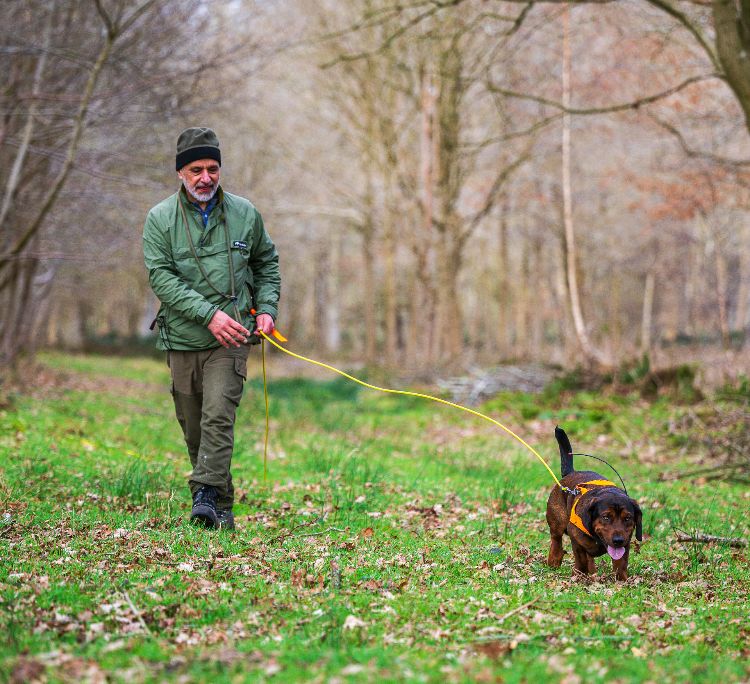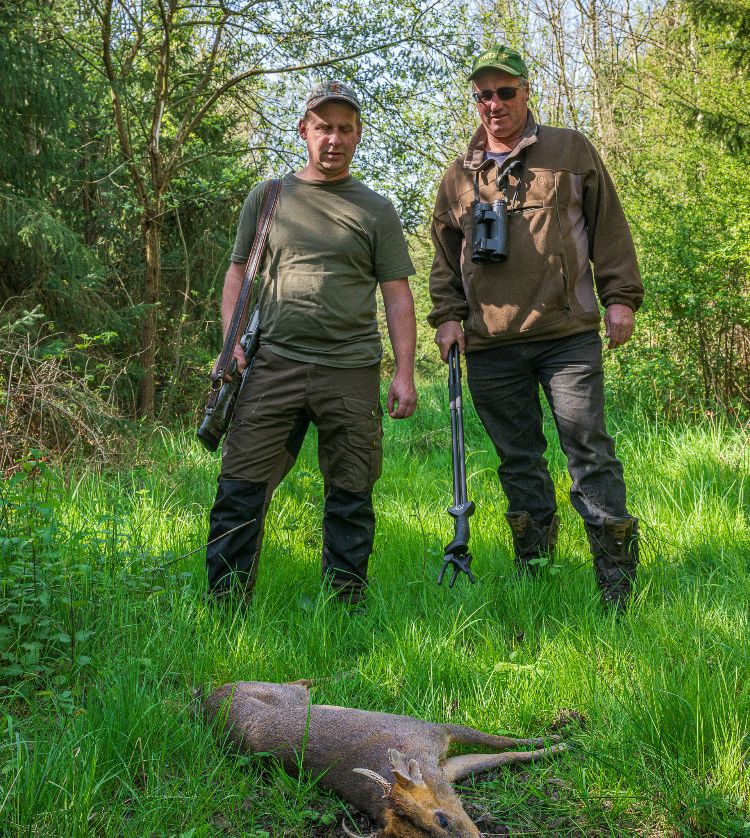The increasing size of the deer population in the British Isles has been reported on extensively in recent years, and I can well believe a statement I recently heard that there are now more deer in the country than at any time since the Norman invasion in 1066. This brings vast problems for conservation and farming, as such large animals roaming the countryside can eat a huge amount of forage – as much as five kilograms per day.
We must also remember the enormous effect on the human population. The number of road traffic accidents attributed to deer is thought to be as many as 70,000 each year, with the estimated cost of vehicle repairs being as much as a million pounds a month. Such accidents result in the death of some 45,000 deer and injury to as many as 400 people. But far more disturbing is the fact that as many as 20 people are killed every year in road traffic accidents involving deer. That’s almost one every other week.
 There has also been an increase in the number of people taking up deer stalking. Just from my own observation I see more colleagues taking up stalking as a regular activity. This has seen the introduction of the various Deer Stalking Certificates, which give a nationally recognised level of expertise. But there is one area that could prove the downfall of many a potential deer stalker – tracking a wounded animal that was not killed cleanly.
There has also been an increase in the number of people taking up deer stalking. Just from my own observation I see more colleagues taking up stalking as a regular activity. This has seen the introduction of the various Deer Stalking Certificates, which give a nationally recognised level of expertise. But there is one area that could prove the downfall of many a potential deer stalker – tracking a wounded animal that was not killed cleanly.
This very point was noted by Richard Evans over a decade ago, after a long period as a recreational stalker. Richard has worked on the same estate since joining it on a Youth Training Scheme after leaving school. He originates from Wales but always had a desire to work as a gamekeeper, and it was a move to the Midlands with the YTS that gave him the opportunity. It took a further 20 years before he realised that, with the increasing interest in deer stalking, there was a similarly growing number of deer not being cleanly killed and a lack of tracking skills to help find the poor wounded beast.
It was after chatting over this point with his colleague Tony Lowry, a fellow gamekeeper and now deer manager, that they realised something needed to be done. The seeds of UK Deer Track & Recovery were sown.
It is now over a decade since those early meetings, but in that time Tony and Richard have witnessed UKDTR grow greatly in strength. But as Richard commented, and I must agree with him, many individuals taking up deer stalking – and even seasoned veterans – are still unaware of UKDTR and the wonderful service, guidance and advice it can offer, all free of charge.
 An outing with a founding member of UKDTR
An outing with a founding member of UKDTR
I joined Richard for a couple of hours while he was out with a guest. It was not long before the quarry of the day was found, a mature muntjac buck, and it fell cleanly to a well-placed and accurate shot. There was no requirement here for the services of UKDTR, as the muntjac was soon found. But in the late spring, with thick, fast-growing vegetation in a densely populated conifer wood, it is easy to see that a deer not cleanly taken could flee and you would struggle to find it.
As we walked back to the road, Richard reminded me that UKDTR is the only British-based organisation solely committed to tracking and rescuing deer. It is not an organisation focused on the breeding of the dogs used in tracking; its interest is in the function of the trained and competent dog and handler during the track.
I questioned Richard on this point and why my working springers, who I pick up with several times a week during the shooting season, would not be able to find a wounded deer. His reply was pretty much to the point. “They may be able to find the deer, but they are not trained to track, especially on an old and cold scent. Likewise, and maybe more important, you are not trained to operate as a tracking dog handler.”
 What qualities are important in tracking dogs?
What qualities are important in tracking dogs?
So is there a particular set of qualities that the UKDTR looks for in a tracking dog, bearing in mind that all their handlers and dogs spread across the country are volunteers and carry out the service free of charge? The UKDTR system is based on the European model of deer tracks, or to be more accurate the Danish system. There are three tests that the dog and handler need to pass, which typically takes between eighteen months and two years, with the dog being about two years old at the conclusion.
The first test is on a scent that is a minimum of three hours old with a minimum 400m track. The second is similar, but the age of the scent is increased to a minimum of 20 hours and the distance to at least 600m. The third test is a handler’s competency test to demonstrate a wider understanding of UKDTR and working with their dog, including legal aspects.
While all the tests can be seen as challenging, Richard explained that the biggest reason for failure is a lack of dedication from the handler. “Yes, it can be a long road, especially with a younger dog, and it does take time. But with dedication and the right dog, most people can pass all three tests.” Plus, as he added, UKDTR will help, encourage and offer support and guidance at all levels to ensure you gain the required competence.
Looking to the future, Tony and Richard, along with UKDTR, have a vision of qualified volunteers and dogs, referred to as a tracking team, being available in every county. By their own admission they are not there yet but are certainly moving in the right direction with the aid of several newly qualified handlers joining them this summer.
 What do UKDTR volunteers do?
What do UKDTR volunteers do?
With the muntjac back to the road and ready to be loaded into the truck, it was time for a quick drink as I asked Richard what it was like to be a volunteer. He soon recollected a call out for a track a couple of years ago. The local UKDTR volunteer was not readily available, so Richard decided to see if he could help. It was a drive of well over 90 minutes to meet with the stalker, following a full brief from him over the telephone and an update as he was driving. The stalker knew he had hit the deer, a fallow doe, and had been able to follow her in the thermal on his rifle for some time, before losing her in a mix of dead ground and a large area of gorse.
On arriving and meeting the stalker, Richard was able to find a small patch of blood and set about tracking, which was not easy in the gorse. With him, that day was his dog Storm, who Richard refers to as one of the founding dogs of UKDTR.
“It took some time. I worked around the gorse several times. It was a big area and I was convinced the doe was still there. As we worked into the gorse Storm moved forward and was soon baying at the doe. He had found her.”
It was clear that Richard had been delighted with the outcome. The stalker had called UKDTR early, accurately captured the location of the shot and the last sighting of the deer, and passed on the information to UKDTR promptly.
All too soon it was time to head back home. I may have had only a short time with Richard, but I had come to realise that the decade of hard work he and Tony have achieved offers a valuable service that any responsible stalker in the country should know about. And not only stalkers, as UKDTR service is also invaluable to deer managers and land agents – in fact anyone working in or involved in the deer sector.
It was clear that Richard and the wider UKDTR team, whom he spoke highly of more than once, are not there to criticise or question. They have only one main aim – to successfully find the deer in a professional and timely manner. But I now also see them offering an educational service based on many years of stalking and tracking experience, which would be invaluable to a deer stalker of all abilities.
I will put my hand up here and confess that I have not had a rifle for long and my days as a deer stalker are in their infancy. But I consider having the UKDTR contact details with me when out stalking to be a vital piece of my kit.
Contact UK Deer Track & Recovery (UKDTR)
www.ukdtr.co.uk
The website has a ‘Find A Tracker’ facility that gives contact details and locations of local qualified tracking teams.
You can also contact UKDTR via its Facebook page.